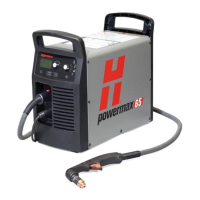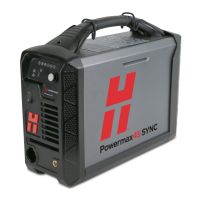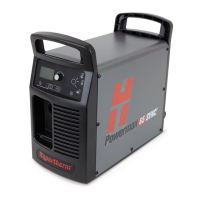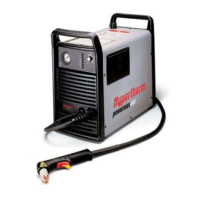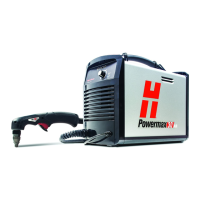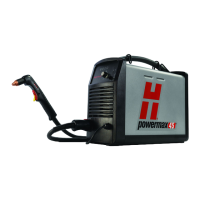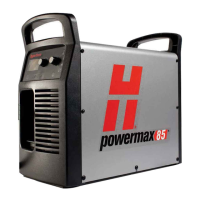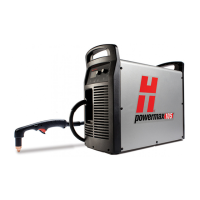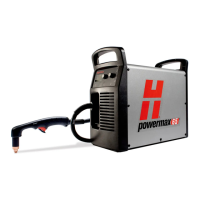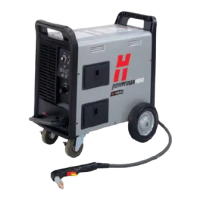How the Plasma Power Supply Operates
Powermax65/85/105 SYNC Troubleshooting Guide 810430 171
The digital signal processor (PCB2) monitors and controls the system’s operation and safety
circuits. The amperage adjustment knob on the control PCB (PCB1) is used to set the output
current: 30 A – 105 A. The system compares the setpoint to the output current by monitoring the
current sensors and adjusting the output of the inverter IGBT module. (Q12).
380 V CCC / 400 V CE 3-phase functional description
AC power goes into the system through the power switch (S1) to the input diode bridge (D38). The
voltage from the bridge supplies a nominal 530 VDC to 560 VDC bus voltage. The bus supplies
voltage and current to the inverter and the flyback circuit (DC to DC converter) on the power PCB
(PCB3). The power PCB provides noise suppression and spike protection. The power PCB
resistors (RT4, RT5) and relay (K2) do a “soft start.”
The inverter has a dual IGBT package (Q12), the power transformer, a current sensor, and the
control circuit. The inverter operates as a pulse-width modulated half-bridge circuit driving an
isolation transformer. The output bridge (D36 and D37) corrects the output of the isolation
transformer.
The output circuitry has 2 current sensors located on the power PCB, the pilot arc IGBT (Q13), and
the output choke.
The digital signal processor (PCB2) monitors and controls the system’s operation and safety
circuits. The amperage adjustment knob on the control PCB (PCB1) is used to set the output
current: 30 A – 105 A. The system compares the setpoint to the output current by monitoring the
current sensors and adjusting the output of the inverter IGBT module. (Q12).
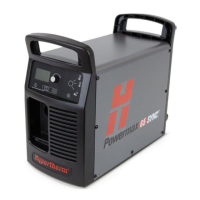
